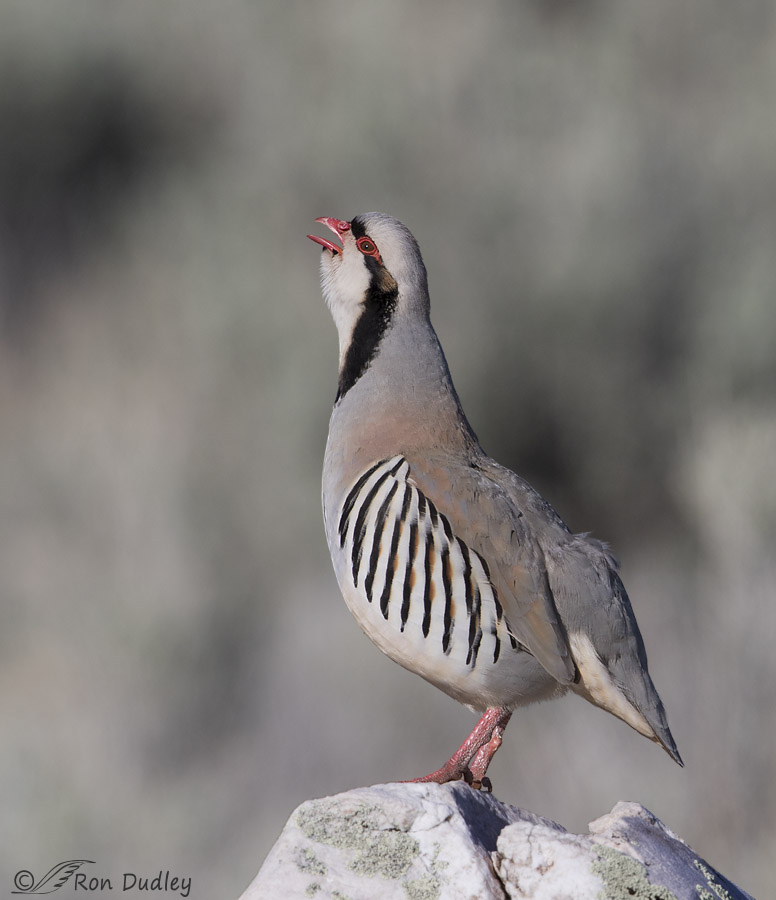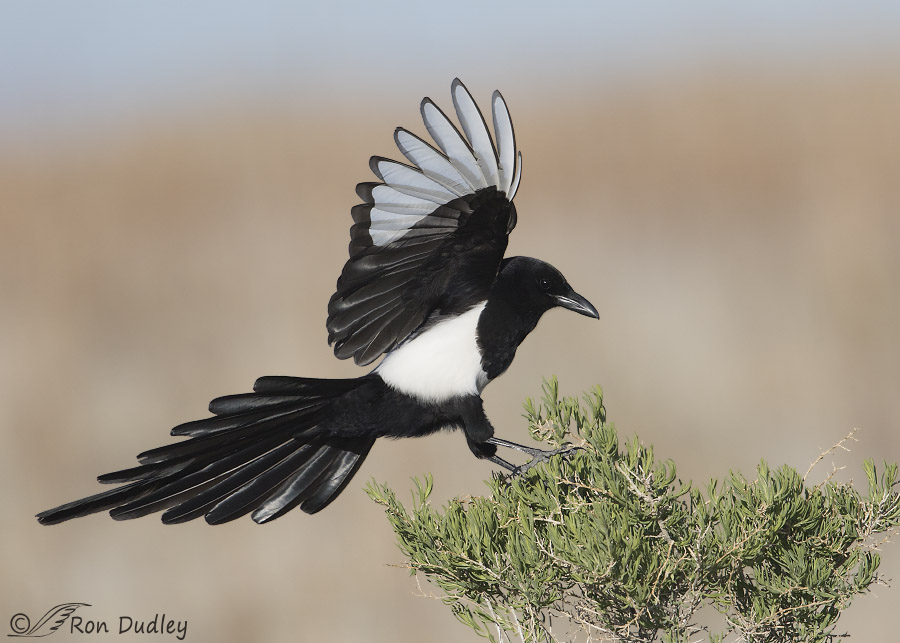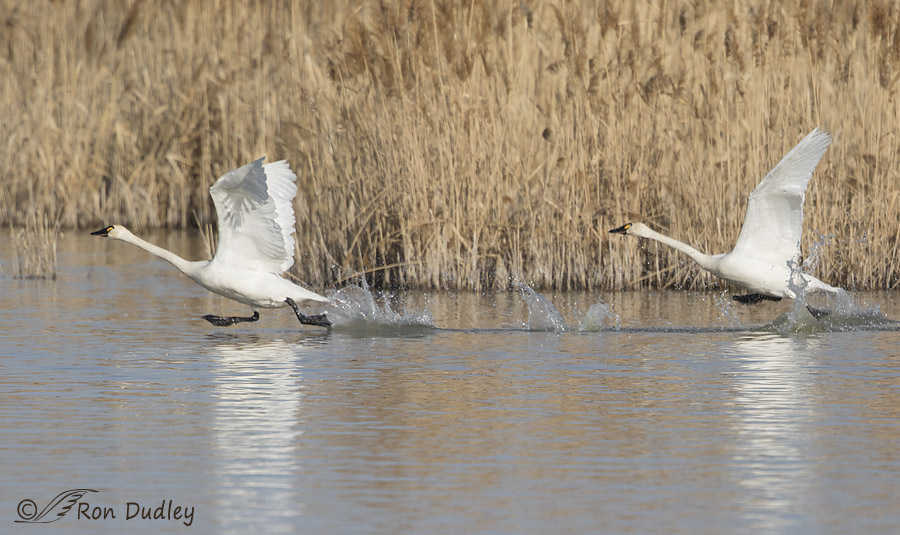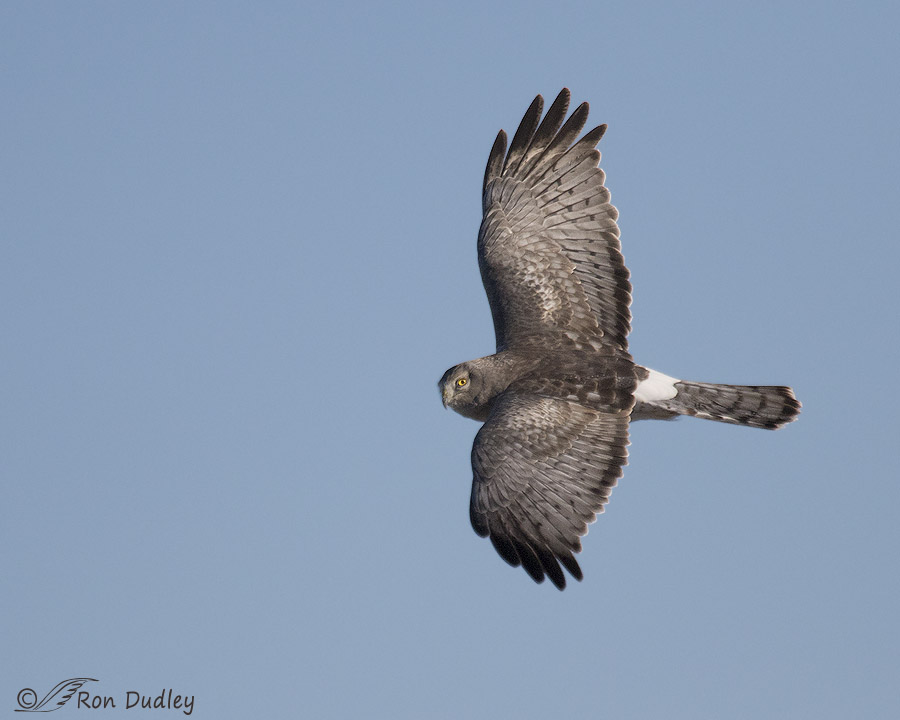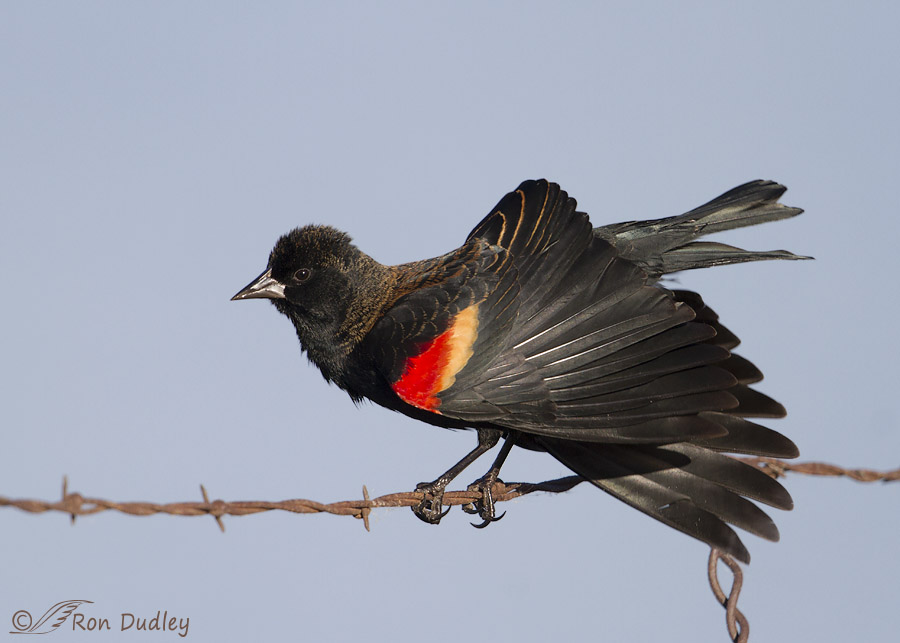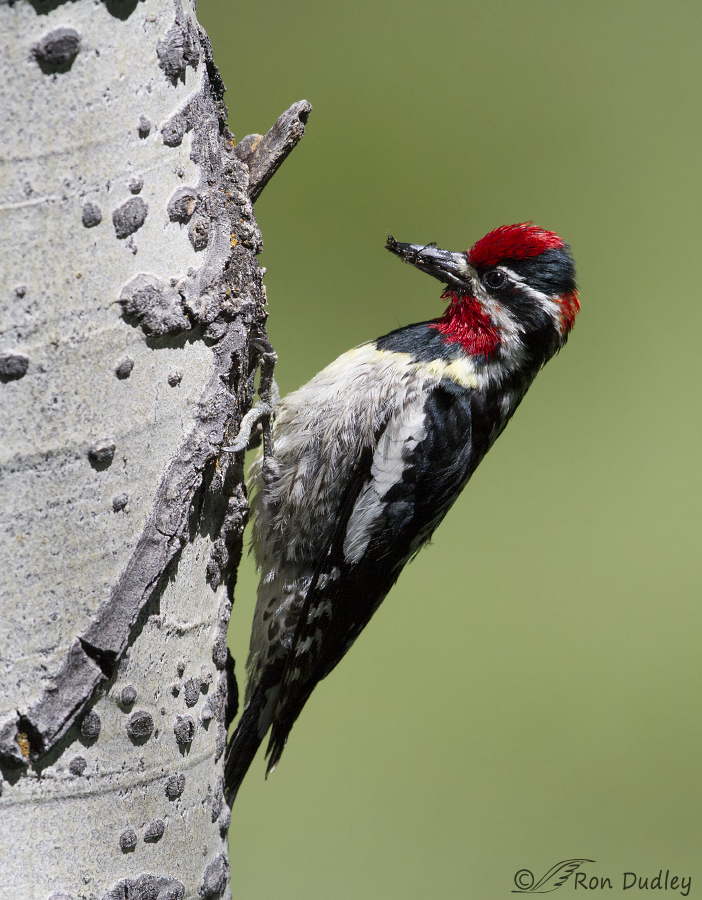Tag: exposure
Landing Black-billed Magpie (and a look at active focus points)
Tundra Swans – A Running Take-off
Two Harriers In Flight Within Minutes – Including The Gray Ghost
Red-winged Blackbird (with a look at exposure and depth of field)
Double-Crested Cormorant Flying Among The Clouds
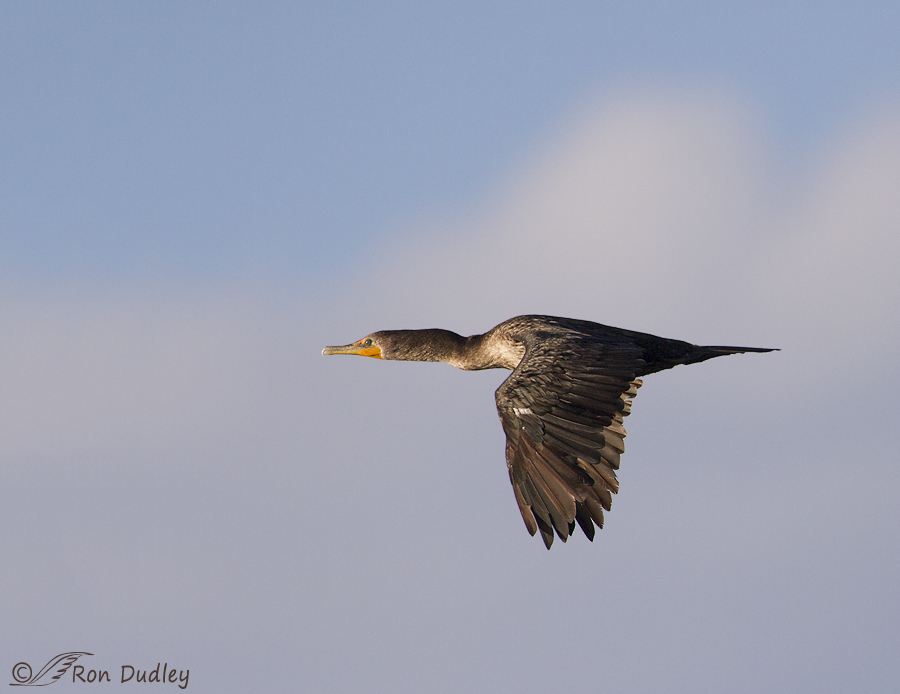
I’m not much of a fan of plain blue sky backgrounds for flight shots and on this morning I was resigned to such an outcome in any flight shots I might get because the sky was virtually cloudless. But just as I snapped the shutter this bird passed by one of the few small clouds to be found anywhere and there was even a tinge of pink provided by the color of the rising sun.
Forster’s Tern In Flight
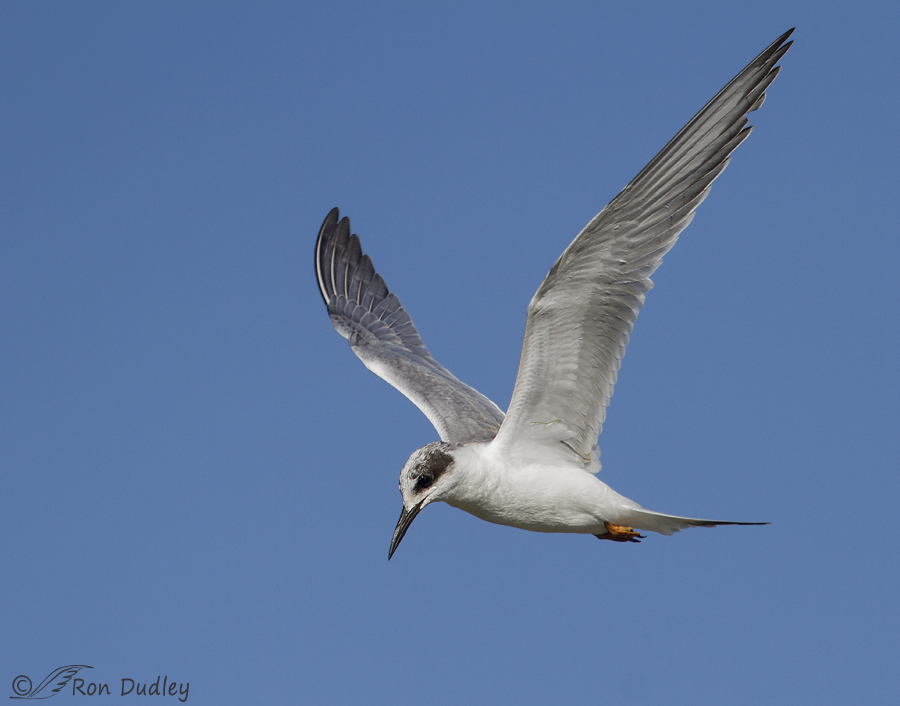
The Forster’s Tern is the only tern that is almost entirely restricted to North America year around. They’re sometimes called “marsh terns” because they breed primarily in fresh, brackish and saltwater marshes, including here in northern Utah. Prior to the Migratory Bird Treaty Act Forster’s Terns were hunted for the millenary trade and because of their habit of hovering over other individuals that had been killed they were particularly vulnerable to being shot.
Red-naped Sapsucker – Sometimes Inappropriate Camera Settings Can’t Be Helped
Sapsuckers Cleaning Out The Nest Hole
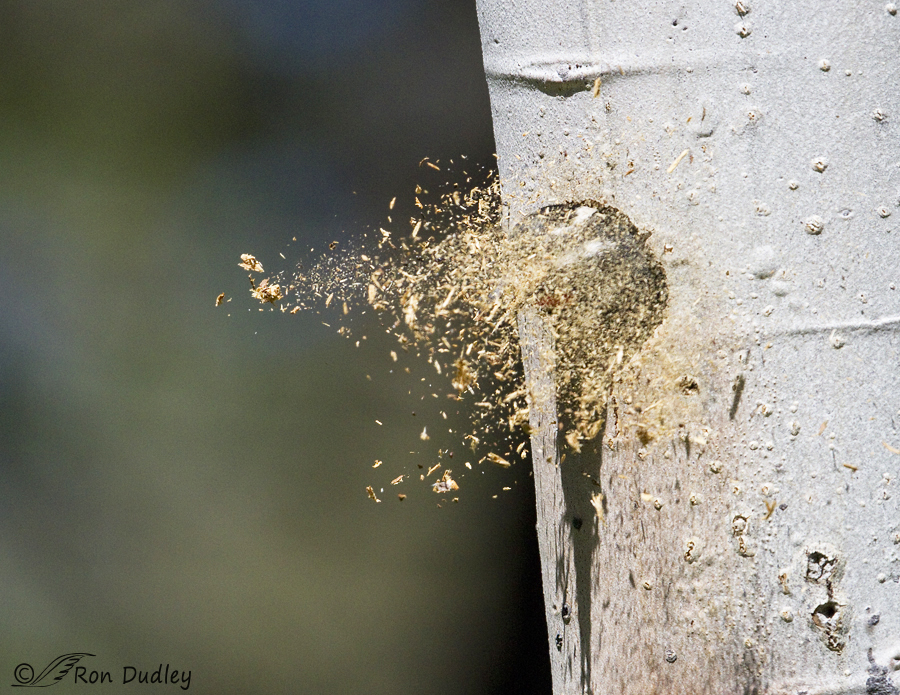
The 5″ x 8″ (interior dimensions) tree nest hole of the Williamson’s Sapsucker with as many as 6 growing nestlings inside presents a significant potential hygiene problem. This post is about how the adults dealt with that situation as I was photographing them about three weeks near the Montana/Idaho border.
Black-billed Magpie In Full Flight (not taking off)
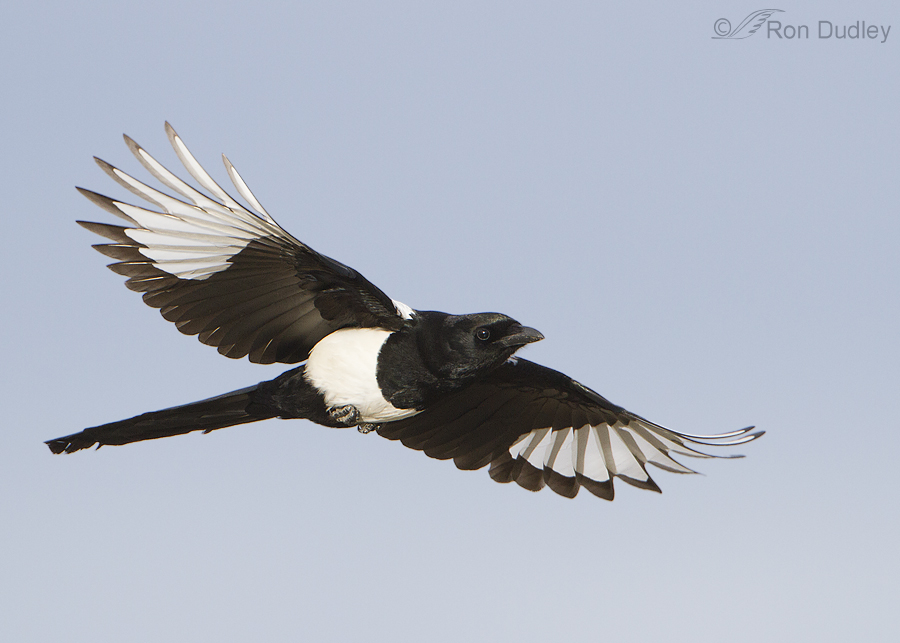
Magpies aren’t among the most glamorous of birds so they don’t get a lot of attention from photographers but I enjoy them for their fascinating behaviors, their gutsiness and their apparent intelligence. And if you want a particularly challenging photographic subject you can’t go wrong with the Black-billed Magpie.
Burrowing Owl In Dramatic Side Light
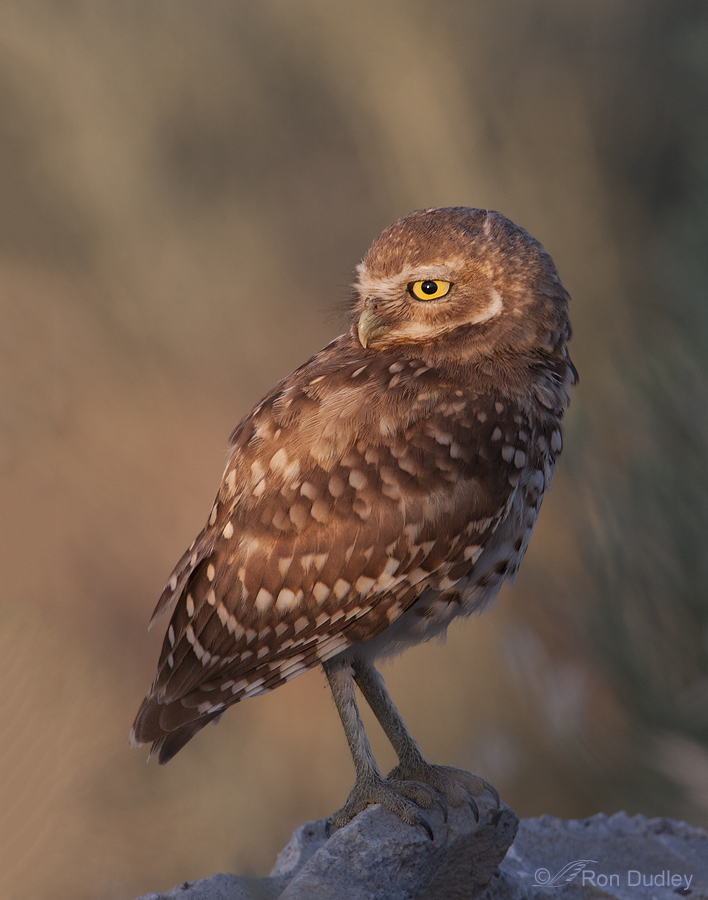
As every photographer knows, light angle can make or break an image. In static portrait shots especially, partial side lighting (at perhaps 45 degrees to your subject) emphasizes texture, patterns and shapes and helps to separate subject from background. It’s been said that side light “sculpts” your subject.
Flaming Gorge Osprey – An Experiment That Worked
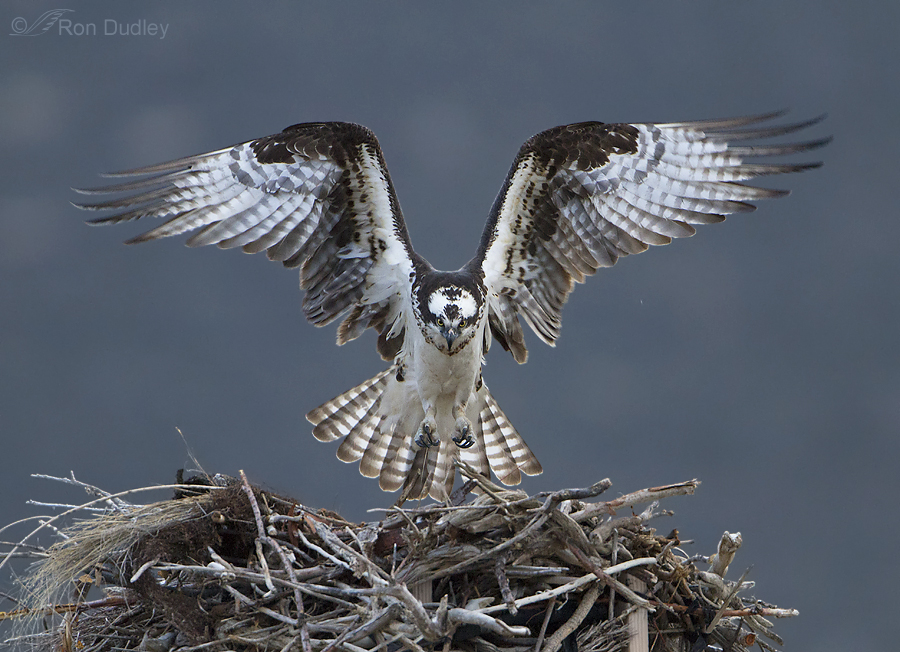
We returned home Thursday after spending three wonderful days camping at Flaming Gorge in NE Utah. This is very close to the view we had on most mornings from our campsites (two of them), though this image was taken the morning before the Osprey photo, below. As you’ll see, the lighting conditions were dramatically different…
Black-billed Magpie Iridescence
Black-billed Magpies are loud, flashy and conspicuous black and white birds. And they’re a challenge to photograph well because of the exposure difficulty – getting detail in the blacks without “blowing out” the whites. I probably discard a higher proportion of shots of this species than I do any other. But if you work hard at it (with a little luck thrown into the mix) you can get some pretty spectacular shots that have detail in the blacks and whites and their showy iridescence. The actual plumage of these birds is truly black and white, with no other colors. But in the right light the feather structure (and other factors) on the tail and wings of these birds bends the light much like a prism and produces a variety of colors, predominantly blues and greens. When I’m photographing magpies, one of my goals is usually to capture some of that iridescence. 1/4000, f/6.3, ISO 500, 100-400 @ 400mm, natural light Three days ago I found this magpie perched on a snow-covered boulder on Antelope Island. As you can see the whites are well-exposed but there’s not a lot of detail in the blacks. This is the type of magpie image that I normally wouldn’t do much with except for purposes such as this post (my high shutter speeds were due to the snow and the fact that I was attempting take-off shots). 1/4000, f/6.3, ISO 500, 100-400 @ 400mm, natural light This is the same bird on the same perch but the image was taken…
Mean-fighting Coots
American Coots are, without question, the most aquatic, common and widely distributed rail species in North America. Clumsy and awkward fliers, they require long running take-offs to become airborne but they are skilled swimmers – largely due to their lobately webbed toes. And oh, are they ever ornery! But first, allow me to make a few excuses… These images of fighting coots were taken several years ago when I was relatively new to photography. My settings weren’t particularly appropriate so I’m not including them here. And most of these photos were shot in JPEG rather than RAW, so my processing options were extremely limited when I tried to adjust exposure, so the frustratingly white bill is pretty bright in a few of these images. This is one of the aggressive postures used by males to challenge other males. Whenever I see this I know that all hell is about to break loose and I’d better be ready. In my experience, coots have two primary fighting strategies. One is for each bird to lie on their backs in the water while propped up by their wings and tails and strike out at each other with their feet and claws. In this fighting position, their defense is to try to grasp the opposing birds feet. Here we get a good look at those unusual lobed toes. If they become locked together they then fight with their bills. The second fighting strategy uses bills and wings as weapons. If one bird gains the advantage it often tries to force its opponent underwater. The losing bird…
The Trouble With Harriers
Obtaining proper exposure on certain birds with high contrast colors has always been a big problem for bird photographers. When your subject has both very light and very dark colors it becomes problematic to get good detail in the darks without “blowing out” the whites, especially if the whites are very bright white. A partial list of bird species that are notoriously difficult to expose properly would include the Black Billed Magpie, male Wood Duck, adult Bald Eagle and many species of Terns. And because of the bright white rump patch found on all ages and both sexes of Northern Harriers, that species would also be on the list. One of the partial solutions to this problem is to photograph while the sun is low during either early morning or late afternoon because the light is much less “harsh” then and also because it has a better chance of striking the bird obliquely rather than at right angles (light at an angle tends to produce tiny texture shadows – “detail”). 1/2000, f/6.3, ISO 500, 500 f/4, 1.4 tc, natural light, not baited, set up or called in I like this image for a variety of reasons: the well-lit and detailed view of the topside of a harrier in flight, provided by the banking flight posture of the bird getting good eye contact with this flight posture isn’t easy, but this shot has it the background has some color texture – instead of solid blue sky or white clouds it’s a subtle mixture of both the harrier is sharp –…
Landing Black-billed Magpie (and a look at active focus points)
Tundra Swans – A Running Take-off
Two Harriers In Flight Within Minutes – Including The Gray Ghost
Red-winged Blackbird (with a look at exposure and depth of field)
Double-Crested Cormorant Flying Among The Clouds

I’m not much of a fan of plain blue sky backgrounds for flight shots and on this morning I was resigned to such an outcome in any flight shots I might get because the sky was virtually cloudless. But just as I snapped the shutter this bird passed by one of the few small clouds to be found anywhere and there was even a tinge of pink provided by the color of the rising sun.
Forster’s Tern In Flight

The Forster’s Tern is the only tern that is almost entirely restricted to North America year around. They’re sometimes called “marsh terns” because they breed primarily in fresh, brackish and saltwater marshes, including here in northern Utah. Prior to the Migratory Bird Treaty Act Forster’s Terns were hunted for the millenary trade and because of their habit of hovering over other individuals that had been killed they were particularly vulnerable to being shot.
Red-naped Sapsucker – Sometimes Inappropriate Camera Settings Can’t Be Helped
Sapsuckers Cleaning Out The Nest Hole

The 5″ x 8″ (interior dimensions) tree nest hole of the Williamson’s Sapsucker with as many as 6 growing nestlings inside presents a significant potential hygiene problem. This post is about how the adults dealt with that situation as I was photographing them about three weeks near the Montana/Idaho border.
Black-billed Magpie In Full Flight (not taking off)

Magpies aren’t among the most glamorous of birds so they don’t get a lot of attention from photographers but I enjoy them for their fascinating behaviors, their gutsiness and their apparent intelligence. And if you want a particularly challenging photographic subject you can’t go wrong with the Black-billed Magpie.
Burrowing Owl In Dramatic Side Light

As every photographer knows, light angle can make or break an image. In static portrait shots especially, partial side lighting (at perhaps 45 degrees to your subject) emphasizes texture, patterns and shapes and helps to separate subject from background. It’s been said that side light “sculpts” your subject.
Flaming Gorge Osprey – An Experiment That Worked

We returned home Thursday after spending three wonderful days camping at Flaming Gorge in NE Utah. This is very close to the view we had on most mornings from our campsites (two of them), though this image was taken the morning before the Osprey photo, below. As you’ll see, the lighting conditions were dramatically different…
Black-billed Magpie Iridescence
Black-billed Magpies are loud, flashy and conspicuous black and white birds. And they’re a challenge to photograph well because of the exposure difficulty – getting detail in the blacks without “blowing out” the whites. I probably discard a higher proportion of shots of this species than I do any other. But if you work hard at it (with a little luck thrown into the mix) you can get some pretty spectacular shots that have detail in the blacks and whites and their showy iridescence. The actual plumage of these birds is truly black and white, with no other colors. But in the right light the feather structure (and other factors) on the tail and wings of these birds bends the light much like a prism and produces a variety of colors, predominantly blues and greens. When I’m photographing magpies, one of my goals is usually to capture some of that iridescence. 1/4000, f/6.3, ISO 500, 100-400 @ 400mm, natural light Three days ago I found this magpie perched on a snow-covered boulder on Antelope Island. As you can see the whites are well-exposed but there’s not a lot of detail in the blacks. This is the type of magpie image that I normally wouldn’t do much with except for purposes such as this post (my high shutter speeds were due to the snow and the fact that I was attempting take-off shots). 1/4000, f/6.3, ISO 500, 100-400 @ 400mm, natural light This is the same bird on the same perch but the image was taken…
Mean-fighting Coots
American Coots are, without question, the most aquatic, common and widely distributed rail species in North America. Clumsy and awkward fliers, they require long running take-offs to become airborne but they are skilled swimmers – largely due to their lobately webbed toes. And oh, are they ever ornery! But first, allow me to make a few excuses… These images of fighting coots were taken several years ago when I was relatively new to photography. My settings weren’t particularly appropriate so I’m not including them here. And most of these photos were shot in JPEG rather than RAW, so my processing options were extremely limited when I tried to adjust exposure, so the frustratingly white bill is pretty bright in a few of these images. This is one of the aggressive postures used by males to challenge other males. Whenever I see this I know that all hell is about to break loose and I’d better be ready. In my experience, coots have two primary fighting strategies. One is for each bird to lie on their backs in the water while propped up by their wings and tails and strike out at each other with their feet and claws. In this fighting position, their defense is to try to grasp the opposing birds feet. Here we get a good look at those unusual lobed toes. If they become locked together they then fight with their bills. The second fighting strategy uses bills and wings as weapons. If one bird gains the advantage it often tries to force its opponent underwater. The losing bird…
The Trouble With Harriers
Obtaining proper exposure on certain birds with high contrast colors has always been a big problem for bird photographers. When your subject has both very light and very dark colors it becomes problematic to get good detail in the darks without “blowing out” the whites, especially if the whites are very bright white. A partial list of bird species that are notoriously difficult to expose properly would include the Black Billed Magpie, male Wood Duck, adult Bald Eagle and many species of Terns. And because of the bright white rump patch found on all ages and both sexes of Northern Harriers, that species would also be on the list. One of the partial solutions to this problem is to photograph while the sun is low during either early morning or late afternoon because the light is much less “harsh” then and also because it has a better chance of striking the bird obliquely rather than at right angles (light at an angle tends to produce tiny texture shadows – “detail”). 1/2000, f/6.3, ISO 500, 500 f/4, 1.4 tc, natural light, not baited, set up or called in I like this image for a variety of reasons: the well-lit and detailed view of the topside of a harrier in flight, provided by the banking flight posture of the bird getting good eye contact with this flight posture isn’t easy, but this shot has it the background has some color texture – instead of solid blue sky or white clouds it’s a subtle mixture of both the harrier is sharp –…


